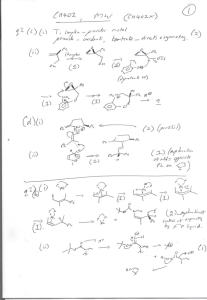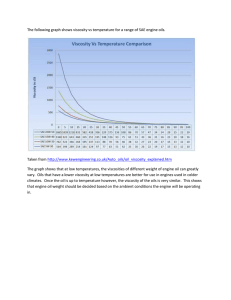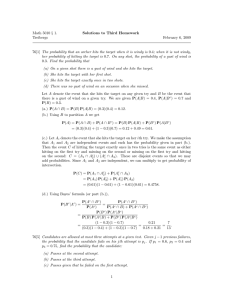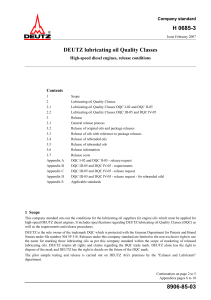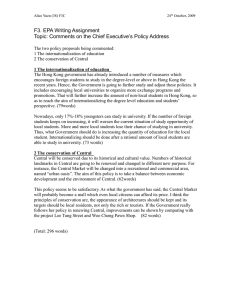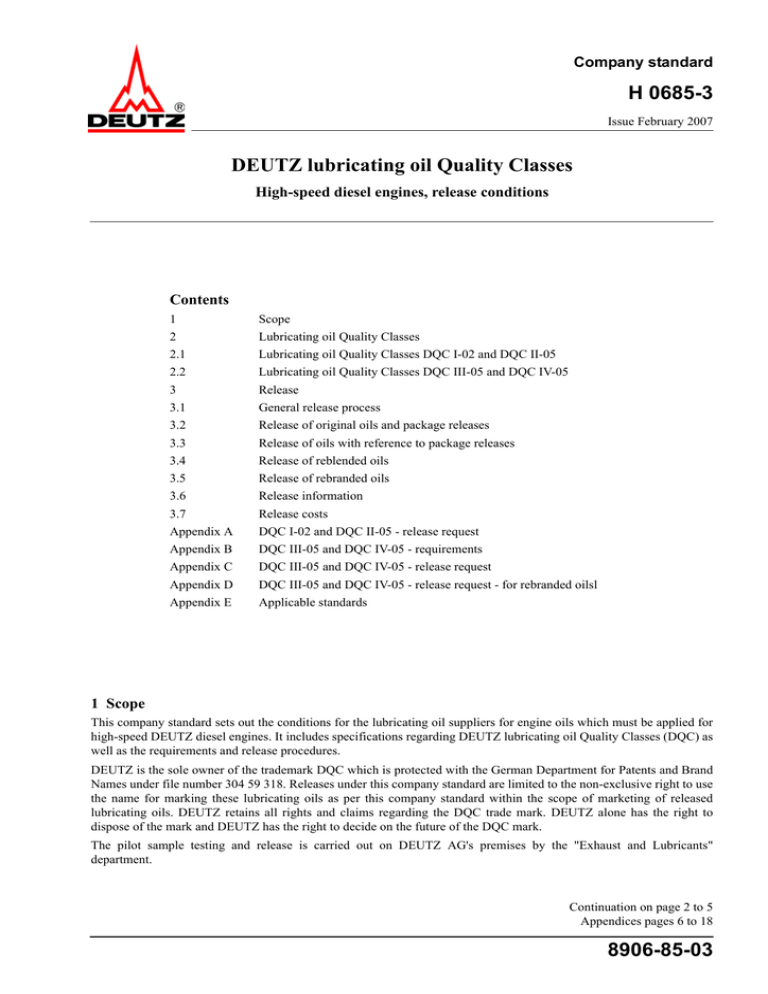
Company standard
H 0685-3
Issue February 2007
DEUTZ lubricating oil Quality Classes
High-speed diesel engines, release conditions
Contents
1
Scope
2
Lubricating oil Quality Classes
2.1
Lubricating oil Quality Classes DQC I-02 and DQC II-05
2.2
Lubricating oil Quality Classes DQC III-05 and DQC IV-05
3
Release
3.1
General release process
3.2
Release of original oils and package releases
3.3
Release of oils with reference to package releases
3.4
Release of reblended oils
3.5
Release of rebranded oils
3.6
Release information
3.7
Release costs
Appendix A
DQC I-02 and DQC II-05 - release request
Appendix B
DQC III-05 and DQC IV-05 - requirements
Appendix C
DQC III-05 and DQC IV-05 - release request
Appendix D
DQC III-05 and DQC IV-05 - release request - for rebranded oilsl
Appendix E
Applicable standards
1 Scope
This company standard sets out the conditions for the lubricating oil suppliers for engine oils which must be applied for
high-speed DEUTZ diesel engines. It includes specifications regarding DEUTZ lubricating oil Quality Classes (DQC) as
well as the requirements and release procedures.
DEUTZ is the sole owner of the trademark DQC which is protected with the German Department for Patents and Brand
Names under file number 304 59 318. Releases under this company standard are limited to the non-exclusive right to use
the name for marking these lubricating oils as per this company standard within the scope of marketing of released
lubricating oils. DEUTZ retains all rights and claims regarding the DQC trade mark. DEUTZ alone has the right to
dispose of the mark and DEUTZ has the right to decide on the future of the DQC mark.
The pilot sample testing and release is carried out on DEUTZ AG's premises by the "Exhaust and Lubricants"
department.
Continuation on page 2 to 5
Appendices pages 6 to 18
8906-85-03
Page 2,
H 0685-3
8906-85-03
2 Lubricating oil Quality Classes
Which lubricating oil qualities complying with DQC are required, also depending on the engine output and operating
conditions, is set out in Technical Circular 0199-99-3002 and in the operating instructions of the various engine series.
Below is a brief description of the oil Quality Classes according to DQC and the engines they are suitable for.
•
DQC I-02
Lowest oil quality, sometimes reduced oil change intervals
•
DQC II-05
Standard quality, usually used in engines with open crankcase ventilation
•
DQC III-05
High-performance diesel engine oil, used in engines with closed crankcase ventilation and
for high-performance engines
•
DQC IV-05
Ultra high-performance diesel engine oil for engines with highest level of output with closed
crankcase ventilation
Engine oils that are released under the higher DQC classifications may also be used in the next lower DQC classes.
The engine oil properties must not change during normal storage periods and must be miscible in any ratio with other
engine oils released by DEUTZ. No precipitation, layering or opacity may occur in these mixtures. The engine oils must
be free of any solid particles and water.
Engine oils permitted under this standard must not contain any ingredients which are classified as prohibited or
undesirable under VDA Guideline 232-101.
The designation and quantity of ingredients which have to be declared under VDA Guideline 232-101 must be shown.
2.1 Lubricating oil Quality Classes DQC I-02 and DQC II-05
Lubricating oils in the lubricating oil Quality Class DQC I-02 and DQC II-05 may be released by DEUTZ if the
requirements for the following classifications are complied with:
DEUTZ lubricating oil Quality Class DQC I-02
ACEA E2-96 or API CF or API CF-4
DEUTZ lubricating oil Quality Class DQC II-05
ACEA E3-96 or ACEA E4-99 or ACEA E5-02 or ACEA E6-04 or ACEA E7-04 or API CG-4 or
API CH-4 or API CI-4 or API CJ-4 or DHD-1
Lubricating oil of Quality Classes DQC I-02 and DQC II-05 which comply with these ACEA or API classifications may
be used in DEUTZ engines without having a specific DEUTZ release.
Lubricating oils which have been tested in a DEUTZ release test and have been released by DEUTZ in writing may be
listed in the datasheets or other publications by the lubricating oil manufacturers as complying with lubricating oil
Quality Class DQC I-02 or DQC II-05. Such claims shall not be used for oils which have not been released.
Their viscosity classes may be one of the following SAE classes:
0W-30, 5W-30, 10W-30, 15W-30
0W-40, 5W-40, 10W-40, 15W-40
20W-50
(Choice of viscosity class depending on the ambient temperatures)
Single-grade oils are also permissible for DQC I-02 and DQC II-05 in terms of TR 0199-99-3002 specifications.
H 0685-3
8906-85-03, Page 3
2.2 Lubricating oil Quality Classes DQC III-05 and DQC IV-05
Lubricating oil complying with DEUTZ Quality Class DQC III-05 and DQC IV-05 may be released by DEUTZ it the
appropriate release requirements have been fulfilled.
The requirements for DQC III-05 and DQC IV-05 oils are listed in Appendix B. The limit values shown in the tables are
for DQC III-05 according to ACEA E7-04 and for DQC IV-05 according to ACEA E7-04 and ACEA E4-99 but in part
with higher requirements. These requirements have been defined in terms of low turbocharger pollution when using
closed ventilation, as well as for improved oxidation stability under high thermial lubricating oil load.
Their viscosity classes may be one of the following SAE classes:
0W-30, 5W-30
0W-40, 5W-40, 10W-40
(Choice of viscosity class depending on the ambient temperatures)
For DQC III-05 the SAE classes 10W-30, 15W-30 and 15W-40 will also be accepted additionally if values drop below
the specified limits with sufficient safety. This will not usually be the case with the oils in these SAE classes presently on
the market but could be possible with regard to newly developed oils in principle.
Lubricating oil manufacturers may list released lubricating oils in datasheets or other publications as complying with
lubricating oil Quality Classes DQC III-05 or DQC IV-05. Such claims shall not be used for oils which have not been
released.
3 Release
3.1 General release process
Necessary actions for the applicant:
•
Completing the form with manufacturer's details as set out in Appendix A for DQC I-02 or DQC II-05, or as set out in
Appendix C for DQC III-05 or DQC IV-05
-If a different method of measurement from that given in the template is used for a certain measured value, this
must be entered in the relevant field and marked in red.
-Test bench results of CEC and ASTM test methods are only recognised if they have accreditation by DIN EN
ISO/IEC 17025 or the ASTM Test Monitoring Center and regular successful participation in round-robin tests
can be proven. Only independent test bench laboratories (e.g. APL and ISP) and test bench laboratories of the
additive producers are permissible.
-Results of laboratory tests are recognized if the testing laboratory has DIN EN ISO/IEC 17025 accreditation and
has participated successfully in interlaboratory tests.
-Only test results from the following test laboratories are accepted for the deposit test according to DIN 51535:
APL Automobil-Prüftechnik Landau GmbH
Am Hölzel 11
D-76829 Landau
I.S.P. GmbH
Neuenkirchener Strasse 7
D-48499 Salzbergen
•
Copies of the original test reports must be submitted (engine and laboratory tests).
•
Submission of the lubricating oil datasheet in English and, if available, in German *).
•
Submission of the safety datasheet in English and, if available, in German *).
•
Infra red spectrum of the lubricating oil (only for DQC III-05 or DQC IV-05)
•
Submission of a sample of the lubricating oil (DQC I-02 or DQC II-05: 2 x 0.5 l, DQC III-05 or DQC IV-05:
2 x 1 l), supplied in HDPE bottles.
*) Does not apply for package releases.
Page 4,
8906-85-03
H 0685-3
With his signature the applicant confirms that all the results and data given in the application are correct, that the
conditions described in this Company Standard are accepted and the applicant undertakes to observe the conditions. If
the applicant is guilty of specifying incorrect results and data and DEUTZ grants a release according to this Company
Standard and engine damage is incurred as a result of the oil quality, the applicant is obliged to compensate DEUTZ’s
losses in case of such damage and to release them from third party claims. If the applicant is guilty of violating the
conditions of this Company Standard and DEUTZ incurs damage as a result, the applicant is obliged to compensate
DEUTZ for such damages and to release them from claims by third parties.
The applicant will normally only market one product worldwide under one brand name, which has been tested and
released by DEUTZ. The oil code will indicate clearly the identity of the engine oil here. In exceptional cases, the
applicant may market different formulations in different countries under the same product designation with different oil
codes, provided DEUTZ has tested and released each formulation. In this case the applicant undertakes to sell only one
product with this formulation in each country.
The applicant undertakes not to make any recommendations concerning use in DEUTZ engines (e.g. with regard to oil
change intervals, viscosity classes etc.) if these do not comply with the recommendations made by DEUTZ.
The application papers and the oil sample must be sent to the following address:
DEUTZ AG
Dept. "Abgas und Betriebsstoffe"
Ottostr. 1
D-51149 Köln
Germany
The forms with the manufacturer's details, the safety datasheets and the IR spectrum must also be sent by e-mail to
lubricants.de@deutz.com
DEUTZ AG will use all the data provided by the applicant exclusively for their own purposes and for assessment of the
release application.
A release is normally valid for 3 years from the written validation by DEUTZ and becomes invalid automatically at the
end of this period. The right to use the DQC mark always expires when the validity expires. The applicant is advised to
submit a renewal application in good time.
The applicant undertakes to inform DEUTZ in writing of any change of the composition of the oil at least 3 months in
advance. If any engine damage is caused by a change in the quality of the lubricating oil and the applicant has not
advised DEUTZ in advance in writing of such a change by the above-mentioned deadline, the applicant undertakes to
compensate DEUTZ for any damage and to release the company from any claims by third parties.
DEUTZ reserves the right to withdraw a release at any time if there are important reasons.
Important reasons in this sense are especially (but not only):
- Any change in the quality of the lubricating oil or its composition (base oil or additives) for the engine oil to
which the release applies
- Insolvency or imminent insolvency of the lubricating oil supplier
- Improper use of the DEUTZ DQC trade mark
Should the composition of an oil be changed, the release process will be the same as for the first release of the changed
oil.
3.2 Release of original oils and package releases
Package releases in the sense of this Company Standard refer to additive packages of additive manufacturers which are
used for different viscosity classes and different oil manufacturing, whereby the additives for this are often modified
slightly. Modifications both to the basic oils and the additives are only permissible insofar as they are described
according to Base Oil Interchange (BOI), Viscosity Grade Read Across (VGRA) and Minor Modification Rules in the
ATIEL/ATC Code of Practice as well as in API 1509 and in the ACC Code of Practice. The described modifications
apply both with regard to the transferability of the package release to oils for which the oil manufacturer refers to the
H 0685-3
8906-85-03, Page 5
package release of the additive manufacturer and with regard to the validity of engine test results in slightly varied oil
compositions. The complete application (appendix C) must be filled in for releases of original oils and package releases.
3.3 Release of oils with reference to package releases
The manufacturer of a lubricating oil who uses an additive package which already has a package release from DEUTZ
must fill in the first 3 pages of the application (appendix C). He must also prove that the modifications in the formulation
of the oil to be released observe the permissible modifications described in chapter 3.2 in comparison with the oil
described in the package release.
3.4 Release of reblended oils
A reblended oil in the sense of this Company Standard refers to an oil already released by DEUTZ which has been made
by another manufacturer according to the same recipe (base oil and additives).
For the release of a reblended oil in accordance with DQC III-05 or DQC IV-05, the first 3 pages of the application
(appendix C) must be submitted.
3.5 Release of rebranded oils
For the purposes of this Company Standard, a rebranded oil is one which DEUTZ has released which is to be resold by
the original manufacturer and released under a different brand name.
For the release of a rebranded oil under DQC III-05 or DQC IV-05 an application as in Appendix D must be submitted as
well as a confirmation from the original manufacturer of the lubricating oil confirming that the oil for which the release
is applied for is a rebrand of an oil which has already been released by DEUTZ AG.
3.6 Release information
The release for lubricating oils according to DEUTZ DQC is in the form of a written release declaration given to the
lubricating oil manufacturer. The lubricating oil brand name in data sheets, publications and oil containers must exactly
match the name of the lubricating oil and the DEUTZ lubricating oil quality class in the release declaration.
A list of the currently released lubricating oils has been published on the Internet under www.deutz.com in the section
”Service >> Oil, Lubricants,Diagnosis”.
3.7 Release costs
A fee will be charged for testing and awarding the release as well as for the right to use the DEUTZ DQC mark.
A written release will only be awarded by DEUTZ AG when the appropriate fee has been paid.
The charges can be requested from DEUTZ when making an application.
Descriptors: engine oil, DQC, mineral oil
Passing on and reproduction of this document and
use and disclosure of its contents are prohibited
unless expressly permitted. Non-compliance will
lead to compensation. All rights reserved for the
event of a patent award or utility model
registration.
Revision
DEUTZ AG - Standards
Earlier editions:
Page 6,
8906-85-03
Appendix A
DQC I-02 and DQC II-05 - release request
H 0685-3
H 0685-3
Appendix A
8906-85-03, Page 7
DQC I-02 and DQC II-05 - release request, continuation
Page 8,
8906-85-03
Appendix B DQC III-05 and DQC IV-05 - requirements
H 0685-3
H 0685-3
Appendix B DQC III-05 and DQC IV-05 - requirements, continuation
8906-85-03, Page 9
Page 10,
8906-85-03
Appendix B DQC III-05 and DQC IV-05 - requirements, continuation
H 0685-3
H 0685-3
Appendix C DQC III-05 and DQC IV-05 - release request
8906-85-03, Page 11
Page 12,
8906-85-03
Appendix C DQC III-05 and DQC IV-05 - release request, continuation
H 0685-3
H 0685-3
8906-85-03, Page 13
Appendix C DQC III-05 and DQC IV-05 - release request, continuation
Page 14,
8906-85-03
Appendix C DQC III-05 and DQC IV-05 - release request, continuation
H 0685-3
H 0685-3
8906-85-03, Page 15
Appendix C DQC III-05 and DQC IV-05 - release request, continuation
Page 16,
8906-85-03
Appendix D DQC III-05 and DQC IV-05 - release request - for rebranded oilsl
H 0685-3
H 0685-3
8906-85-03, Page 17
Appendix E Applicable standards
ATC Code of Practice (Technical Committee of Petroleum Additive Manufacturers in Europe)
ATIEL Guidelines for viscosity grade read-across (VGRA), Base Oil Interchange (BOI) and Viscosity Modifier
Interchange (VMI), Association Technique de I´Industrie Européenne des Lubrifiants
API 1509
Engine Oil Licensing and Certification System
ASTM D 92a
Test Method for Flash and Fire Points by Cleveland Open Cup Tester
ASTM D 97
Test Method for Pour Point of Petroleum Products
ASTM D 189
Test Method for Conradson Carbon Residue of Petroleum Products
ASTM D 445
Test Method for Kinematic Viscosity of Transparent and Opaque Liquids (and Calculation of
Dynamic Viscosity
ASTM D 482
Test Method for Ash from Petroleum Products
ASTM D 874
Test Method for Sulfated Ash from Lubricating Oils and Additives
ASTM D 892
Test Method for Foaming Characteristics of Lubricating Oils
ASTM D 974
Test Method for Acid and Base Number by Color-Indicator Titration
ASTM D 2270
Practice for Calculating Viscosity Index from Kinematic Viscosity at 40 and 100°C
ASTM D 2622
Test Method for Sulfur in Petroleum Produkts by Wavelength Dispersive X-ray
Fluorescence Spectrometry
ASTM D 4052
Test Method for Density and Relative Density of Liquids by Digital Density Meter
ASTM D 4485a
Specifikation for Performance of Engine Oils
ASTM D 4951
Test Method for Determination of Additive Elements in Lubricating Oils by Inductively Coupled
Plasma Atomic Emission Spectrometry
ASTM D 5967
Test Method for Evaluation of Diesel Engine Oils in T-8 Diesel Engine
ASTM D 6082
Test Method for High Temperature Foaming Characteristics of Lubricating Oils
ASTM D 6594
Test Method for Evaluation of Corrosiveness of Diesel Engine Oil at 135oC
ASTM D 6838
Test Method for Cummins M11 High Soot Test
ASTM D 6975
Test Method for Cummins M11 EGR Test
ASTM D 6987
Test Method for Evaluation of Diesel Engine Oils in T-10 Exhaust Gas Recirculation Diesel Engine
CEC L-14-A-93
Evaluation of the Mechanical Shear Stability of Lubricating Oils Containing Polymers
(Fuel Injection Pump)
CEC L-36-A-90
Measurement of Lubricant Dynamic Viscosity under Conditions of High Shear
(Ravensfield Viscosimeter)
CEC L-39-T-96
The Evaluation of Oil-Elastomer Compatibility (Laboratory Test)
CEC L-40-93
Evaporation Loss of Lubricating Oils (NOACK Evaporative Tester)
CEC L-51-A-98
The Evaluation of Engine Crankcase Lubricants with Respect to Low
Temperature Lubricant Thikkening & Wear under Severe Operating
Conditions (MB-OM602A engine)
CEC L-52-T-97
Oil Performance in a EURO II HD Diesel Engine Test (OM 441 LA)
CEC L-85-T-99
Hot Surface Oxidation - Pressure Differential Scanning Calorimeter (PDSC)
DIN 51352-1
Testing of lubricants; determination of ageing characteristics of lubricating oils; increase in
Conradson carbon residue after ageing by passing air through the lubricating oil
DIN 51363-2
Testing of petroleum products - Determination of phosphorus content of lubricating oils and
additives - Part 2: Analysis by wavelength dispersive X-ray spectrometry (XRS)
DIN 51363-3
Testing of petroleum products - Determination of phosphorus content of lubricating oils and
additives - Part 3: Direct determination by optical emission spectral analysis with inductively
coupled plasma (ICP OES)
DIN 51378
Testing of mineral oils; determination of carbon-type composition
Page 18,
8906-85-03
H 0685-3
DIN 51379-2
Testing of lubricants; determination of molybdenum content of lubricating oils; analysis
by wavelength dispersive X-ray spectrometry (XRS)
DIN 51391-2
Testing of lubricants; determination of the content of additive elements; analysis
by wavelengthdispersive X-ray spectrometry (XRS)
DIN 51391-3
Testing of lubricants - Determination of the content of additive elements - Part 3: Direct
determination of Ca, Mg, Zn and Ba by optical emission spectral analysis with inductively
coupled plasma (ICP OES)
DIN 51396-1
Testing of lubricants - Determination of wear elements - Part 1: Direct determination
by inductively coupled plasma optical emission spectroscopy (ICP-OES)
DIN 51396-2
Testing of lubricants - Determination of wear elements - Part 2: Analysis of wavelength
dispersive X-ray spectrometry (XRF)
E DIN 51399-1
Testing of lubricants - Determination of additive elements, wear and other contaminations Part 1: Direct determination by optical emission spectral analysis with inductively coupled
plasma (ICP OES)
DIN 51400-2
Testing of mineral oils and fuels - Determination of sulfur content (total sulfur) - Part 2:
Combusting according to Grote-Krekeler; acidimetric titration; gravimetric determination
DIN 51443-2
Testing of lubricants - Determination of the boron content - Part 2: Direct determination
by optical emission spectral analysis with inductively coupled plasma (ICP OES)
DIN 51535
Testing of petroleum products - Determination of deposition forming tendency of motor oils
in exhaust turbochargers and intercoolers of supercharged diesel engines
DIN 51551
Testing of lubricants and liquid fuels; determination of the carbon residue; Conradson method
DIN 51558-1
Testing of Mineral Oils; Determination of the Neutralization Number, Colour-indicator
titration
DIN 51562-1
Viscometry - Measurement of kinematic viscosity by means of the Ubbelohde viscometer Part 1: Viscometer specification and measurement procedure
DIN EN 590
Automotive fuels - Diesel - Requirements and test methods
DIN EN ISO 2592
Petroleum products - Determination of flash and fire points - Cleveland open cup method
DIN EN ISO 6245
Petroleum products - Determination of ash
DIN EN ISO 12185
Crude petroleum and petroleum products - Determination of density - Oscillating
U-tube method
DIN EN ISO 14596
Petroleum products - Determination of sulphur content - Wavelength-dispersive
X-ray fluorescence spectrometry
DIN EN ISO/IEC 17025 General requirements for the competence of testing and calibration laboratories
DIN ISO 2909
Petroleum products - Calculation of viscosity index from kinematic viscosity
DIN ISO 3016
Petroleum oils; determination of pour point
DIN ISO 3771
Petroleum products; total base number; perchloric acid potentiometric titration method
Cummins ISM
Cummins ISM Test Method for Lubricant Qualification
Mack T-12
Mack T-12 Test Method for Lubricant Qualification
SAE J300
Engine Oil Viscosity Classification
VDA 232-101
List of declarable substances

